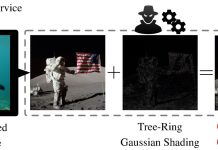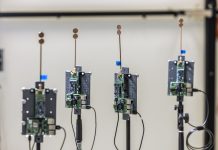
Imagine a computer chip that can do math with light instead of electricity. Sounds like something from a sci-fi movie, right?
Well, engineers at the University of Pennsylvania have turned this idea into reality, creating a new chip that could change how computers work, making them faster and more energy-efficient.
This new chip is based on a technology called silicon-photonic (SiPh) and comes from merging two exciting areas of research.
One is led by Nader Engheta, a celebrated researcher known for his work with materials at the nanoscale, using light for computations.
The other area is the SiPh platform, a technology that uses silicon (the same material used in regular computer chips) to control light waves.
The big deal about this chip is that it uses light, the fastest thing in the universe, to perform calculations. This approach could make computers way faster than they are today, and use less power, too.
In their study, published in Nature Photonics, Engheta’s team worked with Firooz Aflatouni’s group. Aflatouni is an expert in creating tiny silicon devices.
Together, they aimed to use this technology for AI, specifically for something called vector-matrix multiplication. This math is crucial for neural networks, which are the brain-like systems that make AI smart.
Instead of making the whole silicon chip the same thickness, they made parts of it super thin, about 150 nanometers in some places. These thin spots scatter light in special ways that allow the chip to do math super fast.
What’s really cool is that this chip design is ready for the big time.
It can be made with the same processes used for other computer chips, meaning it could soon be used to make graphics processing units (GPUs) faster. GPUs are important for AI because they handle the complex calculations AI systems need.
Besides being speedy and energy-saving, this chip has a bonus: it’s great for privacy. Because it can do many calculations at once, it doesn’t need to store sensitive information in a way that hackers could get to.
According to Aflatouni, this means a computer using this chip would be super secure, as there’s no memory to hack into.
This invention isn’t just a step forward for computing; it’s a leap. It brings together cutting-edge research in materials science and photonics to make AI and other computer processes faster, more efficient, and safer.
This could be the beginning of a new era in computing, where light does the work that electricity used to do.
The research findings can be found in Nature Photonics.
Copyright © 2024 Knowridge Science Report. All rights reserved.



